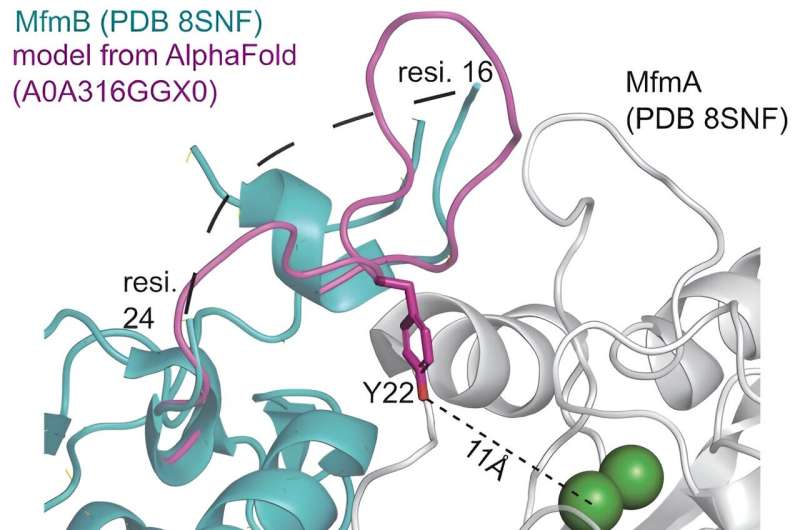March 4, 2024 report
This article has been reviewed according to Science X's editorial process and policies. Editors have highlighted the following attributes while ensuring the content's credibility:
fact-checked
peer-reviewed publication
trusted source
proofread
Bacterial genes responsible for breaking down metformin in sewer water discovered

A team of biochemists at the University of Minnesota has discovered which two bacterial genes are responsible for producing proteins capable of breaking down metformin in sewer water. In their study, published in the Proceedings of the National Academy of Sciences, the group isolated genes likely to be involved in creating the target proteins.
Prior research has shown that metformin, the wildly popular drug prescribed to type 2 diabetes patients, remains in its native form when expunged from the body in excrement and urine. Because of that, the drug, like many others that are consumed by human patients, makes its way into the sewer system.
That is a problem because after treatment, which cannot remove drugs, the water is pumped into local water systems such as streams, rivers, lakes and the ocean. Once there, metformin can adversely impact aquatic life.
Prior research has shown that some types of bacteria are capable of partially breaking down metformin into a compound called guanylurea. This was noted when levels of metformin in sewer water in some treatment plants were lower going out than they had been coming in. Soon thereafter, the specific bacteria responsible for breaking down the drug was identified. But which genes were responsible for the feat remained a mystery.
In this new effort, the researchers chose likely candidate genes and tested them to see if they were the ones they were after. In so doing, they came upon two genes in five unique bacteria types, mfmA and mfbB, that were responsible for producing the types of proteins capable of breaking down metformin. In further testing, they found that when the resulting proteins encountered metformin, they broke it down into guanylurea and another compound called dimethylamine. They found it was able to do so through a process that involved binding nickel.
The research team also found evidence suggesting that the bacteria had evolved the ability to specifically metabolize metformin after the drug began showing up in sewer systems. They suggest study of the process that led to the bacteria evolving to take advantage of the drug could lead to better strategies for the removal of drugs from sewer water before they are pumped into the environment.
More information: Lambros J. Tassoulas et al, Dinickel enzyme evolved to metabolize the pharmaceutical metformin and its implications for wastewater and human microbiomes, Proceedings of the National Academy of Sciences (2024). DOI: 10.1073/pnas.2312652121
Journal information: Proceedings of the National Academy of Sciences
© 2024 Science X Network




















